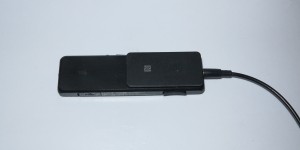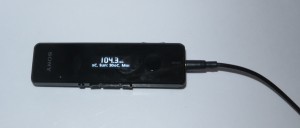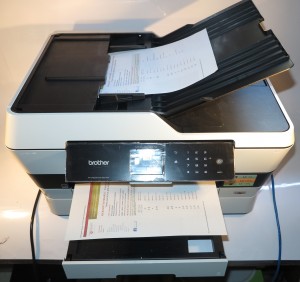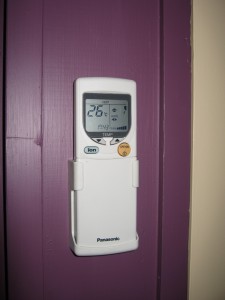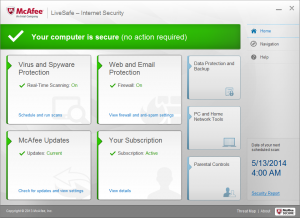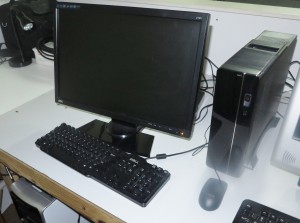Product Review–Sony SBH-52 Bluetooth Headphone Adaptor
Introduction
I had decided to upgrade my Bluetooth headphone adaptor which was the Nokia BH-111 to the Sony SBH-52 Bluetooth Headphone adaptor, with a view to head towards some newer capabilities that these devices have. This is also to benefit from various improvements like multipoint operation, aptX audio codec for high-quality music and HD Voice codecs for improved mobile telephony services.
Price
RRP: AUD$159.95
Specifications
| Connections | |
| Headphones | 3.5mm stereo headphone jack |
| Power | MicroUSB charging socket |
| Sources | |
| Bluetooth audio | Bluetooth A2DP with aptX |
| Analog Radio | FM |
| Communications | |
| Handsfree | Bluetooth HandsFree Profile to integrated speaker and microphone |
| Multi-Device | Yes – two devices |
| Pairing | One-button pairing, NFC “touch-to-pair” |
| Bluetooth | |
| Standard | 3.0 |
| Profiles | Hands-Free Profile 1.6 |
| A2DP Audio Profile 1.2 | |
| AVRCP Audio Control Profile 1.4 |
The Bluetooth adaptor itself
The Sony SBH-52 Bluetooth headphone adaptor comes with a pair of in-ear earphones but can be used with any headphones that you wish such as your good Bose, B&O, Sennheiser or Skullcandy “cans” or a set of noise-cancelling headphones for that flight or train trip. It also works as a Bluetooth handset or speakerphone which would come in handy with a computer that is running a softphone application.
For setup, you can pair up an Android or Windows device with the Sony headphone adaptor using NFC “touch-and-go” pairing by touching the device to the headphone adaptor’s tie clip. But you would have to hold down the POWER button at the end to make it discoverable if you were to pair it with a device that doesn’t support this kind of pairing like all of the Apple devices.
It presents itself to the host device as a Bluetooth Hands Free Profile device and a Bluetooth A2DP audio device with support for aptX high-quality sound for music and HD Voice codecs for communications. It also works to the AVRCP 1.4 device-control standard with the ability to show the title and artist of the currently-playing song when used with a device that supports this level of functionality.
You can even pair this Bluetooth headphone adaptor with two devices and set them up in “Multipoint” mode so you can run them at once. For example, you could pair with two smartphones such as your work phone and your personal phone and answer calls on either of them using its handset button. Similarly, you could pair it with you desktop or laptop computer running a “virtual-extension” softphone app or a Bluetooth-enabled desk phone alongside a smartphone and manage calls from both these devices.
As well, the device serves as an RDS-equipped FM stereo radio but you will need to use it with your headphones because the headphone cable serves as its FM aerial.
But the Sony SBH-52 shows its real capabilities when you use it with your Android smartphone because of a Sony “Smart Connect” app, something I see as Sony’s “love-letter” to the open-frame Android mobile-device platform. This works as a “go-between” for messaging, Facebook, GMail and some other services through the use of downloadable “extensions” that you pick up from Google Play. It also becomes a watch showing the current time when you have it switched on and connected with the Android smartphone running this app.
Operational Experience
I have found that the Sony SBH-52 Bluetooth headphone adaptor clips to your shirt or tie without any issues whereas the older Nokia BH-111 had difficulties with clipping to thicker materials present in winter clothing or premium ties. This is due to the use of a clip that works in a similar manner to the old clothes-peg or the clip on an old-fashioned clipboard.
One issue that I have noticed at times is for the Sony SBH-52 to lose its connection with the phone if there is a period of inactivity. It can also manifest in the form of the on-screen data being out-of-sync with what is playing or whether the music is playing at all. This can be rectified by you powering the Bluetooth adaptor off and on or pairing again with the host device and may be a problem with the particular Android Bluetooth software in the Samsung smartphone.
The call-log function wasn’t all that consistent – it was able to show the caller’s name or number for whoever rang in or whoever I rang, but I couldn’t ring that caller back from the Bluetooth audio adaptor. Here, I would see the option to call back on the screen, with the “Yes” or “No” options, but couldn’t action these options using the Play/Pause key. This may be an issue if you haven’t set a particular call handler to be your default call handler on your Android phone.
A problem that can also happen with this headset and other Bluetooth headsets or hands-free devices is if you run a VoIP client like Viber or Skype on your Android phone, you can’t answer the VoIP client’s calls using the headset’s call-control button. This can be awkward in those situations where hands-free operation is desireable or paramount such as driving, walking or cycling. It is something I had found to my chagrin that I couldn’t answer an incoming Viber call using the SBH-52’s call button and had to use the Viber user interface on my Samsung phone to take that call.
The sound from your phone’s media player comes across as good as what the phone and headphones allow. Of course, you may notice a sense of clarity in the sound that it yields.This occurs with both the Bluetooth music and phone calls along with the radio. Of course, it will exhibit the limitations of the FM band which are similar to what is expected of Walkman-style FM radios, such as inconsistent FM reception in hilly or forest areas or city-centre areas with many tall buildings. But it was able to stay locked on to whatever I tuned it to without drifting.
The SBH-52 headset works properly with my Windows 8 computer, even providing elementary AVRCP-level control of media players using its media-control buttons. As well, when used in the Multipoint mode, each of the two devices is treated as a “source” in context with music and audio-content playback.
As for battery runtime, I was able to obtain one and a half days of music-streaming with a few phone calls out of this device before it needed to be recharged. As well, it was able to come from being empty to a full charge overnight once hooked up to an ordinary USB charger. Here, I could use any old microUSB-USB charge/data cable to connect the SBH-52 to a computer or charger when the time comes to charge it up.
Limitations And Points Of Improvement
The software for the Sony SBH-52 headset adaptor could be worked on better such as to allow the connection between it and a previously-paired Android host device to be properly healed when you switch it on and press the “play/pause” button. It could also make sure that it intercepts all incoming-call events from other Android VoIP apps so you can take calls on the headset.
The FM radio leaves a lot to be desired when it comes to functionality. One important function that is sorely missing is the ability to have preset stations. Similarly, the RDS aspect could be improved on, such as to have the PS station-identifier information shown in lieu of the frequency like what happens with automotive implementations. Even implementing the AF “follow-me” functionality that is used in Europe to automatically tune between different transmitters for a network station could earn its keep with travellers who use this while travelling across a country or region.
Sony could sell a variant of these headphone adaptors which is equipped with a DAB+ radio tuner for Europe, Australia and other countries where DAB or DAB+ digital-radio service is operational. It is more important with those markets like Australia where the AM radio stations which carry information-based radio content also appear on DAB+ digital radio while also underscoring DAB+ digital radio’s robustness for portable use.
Sony could extend their Bluetooth headset adaptors’ functionality by providing native support for the Bluetooth MAP messaging profile so that all text and other messages that come in show up on the adaptor’s display. As well, they could implement the full Bluetooth Handsfree profile with its call-control features in the headset adaptor natively without the need to run extra software. This means support for call-log abilities and access to platform-based “voice-assist” functionality irrespective of the phone’s platform. Some functions like a “call-log” ability could also require implementation of the Phone Book Access Profile.
Conclusion
I see that the Sony SBH-52 Bluetooth headset adaptor can work effectively as a Bluetooth headset adaptor when you have a smartphone that is your music player or run a separate Bluetooth-capable music-player device such as a tablet alongside your smartphone. It is also worth its salt if you also value having access to FM radio as another content source while on the go.
As well, Sony is stepping in the right direction by offering Bluetooth headset adaptors like this one that suit the needs of current smartphones and mobile telephony services.


